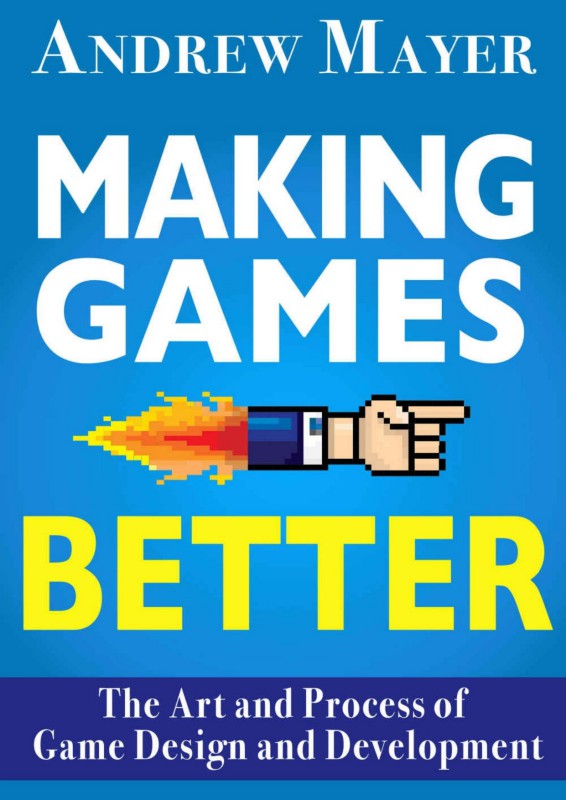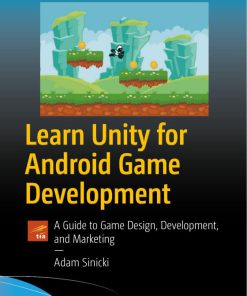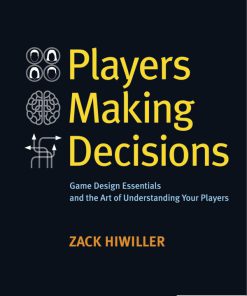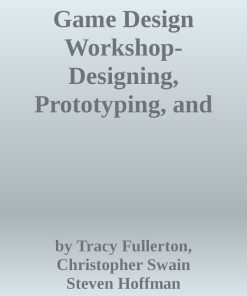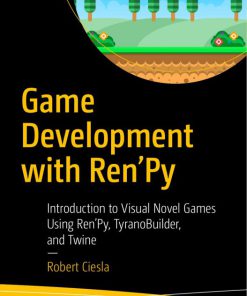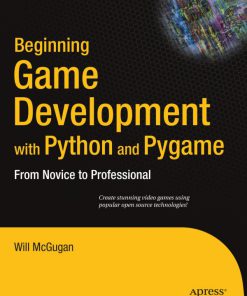Making Games Better The Art and Process of Game Design and Development 1st Edition by Andrew Mayer, Will Guy ISBN B01L9P9WRG
$50.00 Original price was: $50.00.$25.00Current price is: $25.00.
Authors:Andrew Mayer , Series:Gaming [98] , Tags:Software; Video; Game; Video Game Design and Production; Production; Design; Games , Author sort:Mayer, Andrew , Languages:Languages:eng , Published:Published:Sep 2016 , Publisher:Level Up Design
Making Games Better The Art and Process of Game Design and Development 1st Edition by Andrew Mayer, Will Guy – Ebook PDF Instant Download/Delivery. B01L9P9WRG
Full download Making Games Better The Art and Process of Game Design and Development 1st Edition after payment
Product details:
ISBN 10: B01L9P9WRG
ISBN 13:
Author: Andrew Mayer, Will Guy
Before you can share your great game with the world first you need to survive the process of software development.
In Making Games Better you’ll learn the keys to being a great designer in every phase of game creation, including:
• How to prototype your concept for maximum impact
• The secret to great documentation
• The difference between a good crunch and a death march
• Much much more
With over 25 years of experience as a game designer, consultant, and creative director, Andrew Mayer has helped to craft and deliver best-selling titles for companies such as Sony, Cartoon Network, Bioware and many more.
Let him help you to navigate the art and process of transforming your brilliant game design into an amazing experience everyone will want to play!
This edition also includes entertaining illustrations by the amazing Will Guy.
Making Games Better The Art and Process of Game Design and Development 1st Edition Table of contents:
Chapter 1: The Foundations of Game Design
- What Makes a Game Fun?
- Defining Game Design and Its Scope
- The Role of the Game Designer
- The Intersection of Art, Technology, and Gameplay
- Core Mechanics, Rules, and Objectives
- The Importance of Player Experience (UX)
- Case Study: Analyzing Classic Games
Chapter 2: The Game Design Process
- The Stages of Game Development: From Concept to Release
- Prototyping: The First Step in the Design Process
- Iteration and Feedback Loops
- Creating a Game Design Document (GDD)
- Balancing and Refining Game Mechanics
- Collaboration Between Designers, Artists, and Programmers
- Project Management and Time Constraints
Chapter 3: Designing Game Mechanics
- What Are Game Mechanics?
- Types of Game Mechanics: Core, Secondary, and Tertiary
- Designing for Player Interaction: Action, Strategy, and Puzzle Mechanics
- Balancing Mechanics for Difficulty and Engagement
- Rewards and Progression Systems
- Emergent Gameplay and Its Role in Design
- Example: Designing Combat Mechanics for an RPG
Chapter 4: Storytelling and Narrative in Games
- The Importance of Narrative in Game Design
- Types of Narrative Structures in Games
- Player Agency and Choice in Storytelling
- Writing Dialogue and Character Development
- Designing for Emotional Engagement
- The Role of Worldbuilding in Immersive Games
- Case Study: Effective Use of Narrative in Adventure Games
Chapter 5: Visual and Audio Design
- The Role of Art in Game Design
- Visual Style: Realistic vs. Stylized
- Designing Characters, Environments, and UI Elements
- Animation and Motion in Games
- Creating an Atmosphere with Music and Sound Effects
- Implementing Audio for Immersion and Feedback
- Integrating Visuals and Audio into Gameplay
Chapter 6: Prototyping and Playtesting
- The Role of Prototyping in Game Development
- Rapid Prototyping Techniques
- Iteration and Refinement Through Playtesting
- Collecting and Analyzing Playtest Feedback
- Balancing Difficulty and Fun Through Testing
- Avoiding Common Pitfalls in Playtesting
- Case Study: How Playtesting Transformed a Game Idea
Chapter 7: Game Worlds and Environments
- Designing Engaging Game Worlds
- Level Design: Layouts, Pacing, and Flow
- Environmental Storytelling Through Design
- Creating Dynamic and Interactive Worlds
- Implementing Open Worlds vs. Linear Worlds
- Designing Worlds for Different Genres
- Example: Designing a Virtual City for an Open-World Game
Chapter 8: User Interface (UI) and User Experience (UX) Design
- The Importance of UI/UX in Game Design
- Principles of Good UI Design for Games
- Creating Intuitive and Accessible Controls
- Designing HUDs and Menus for Clarity
- Designing for Different Platforms: PC, Consoles, and Mobile
- The Role of Feedback in UX Design
- Case Study: Improving UX in a Puzzle Game
Chapter 9: Balancing and Game Difficulty
- Understanding Player Skill and Challenge
- Difficulty Levels and Adaptive Systems
- Balancing Risk and Reward in Game Design
- Designing for Different Player Types and Preferences
- Dynamic Difficulty Adjustment (DDA)
- Avoiding Frustration and Ensuring Fun
- Example: Designing Difficulty for a Platformer Game
Chapter 10: Monetization and Business Models
- The Economics of Game Design
- Different Monetization Models: Premium, Freemium, Subscription, and Ads
- Designing Games for Mobile and Free-to-Play Markets
- The Role of Microtransactions and In-Game Purchases
- Ethical Considerations in Monetization
- Case Study: Monetization Strategies in Online Games
Chapter 11: Post-Launch and Updates
- The Importance of Post-Launch Support
- Patching and Fixing Bugs After Launch
- Expanding a Game Through DLCs and Updates
- Community Engagement and Feedback
- Managing Player Expectations and Feedback
- The Role of Live Operations in Games as a Service (GaaS)
- Example: Maintaining and Updating a Multiplayer Game
Chapter 12: The Future of Game Design
- Emerging Trends and Technologies in Game Development
- Virtual Reality (VR) and Augmented Reality (AR) Games
- Artificial Intelligence and Machine Learning in Games
- The Rise of Cloud Gaming and Streaming
- Designing for Next-Generation Consoles and Mobile Devices
- What the Future Holds for Game Designers
- Closing Thoughts on the Evolution of Game Design
Appendices
People also search for Making Games Better The Art and Process of Game Design and Development 1st Edition:
making game art
making videogames the art of creating digital worlds
building better games
difference between game art and game design

